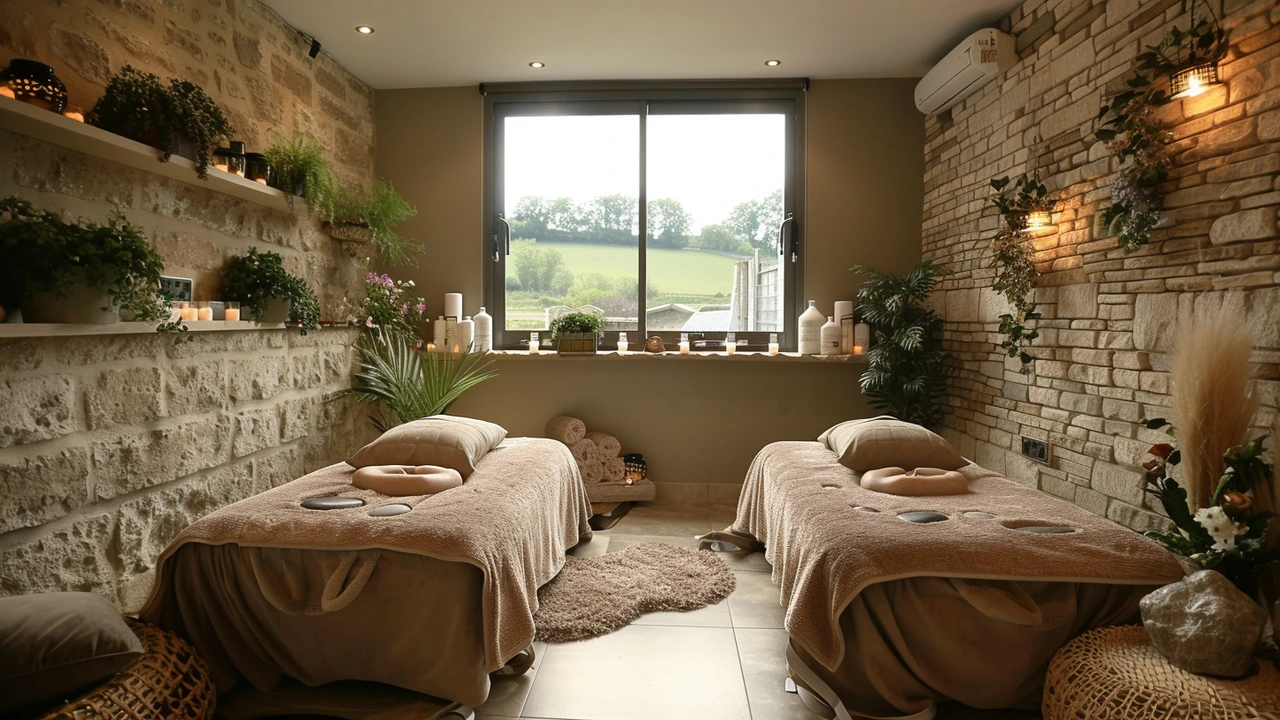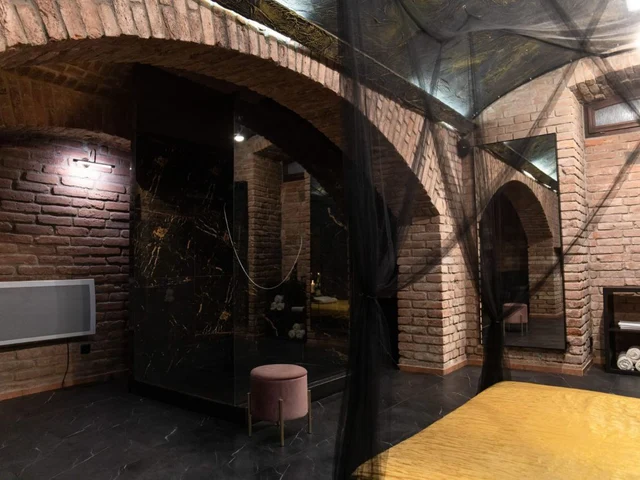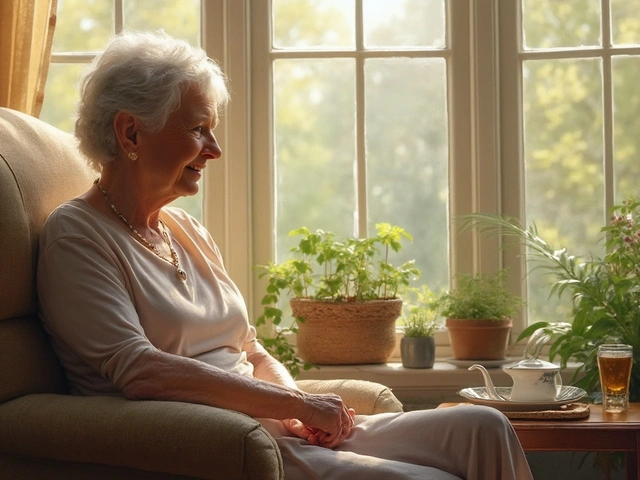Uncovering the Truth About Stone Massage Therapy

Stone massage therapy has been gaining popularity, but it's also surrounded by a fair share of myths and misunderstandings. Let's shed some light on the real benefits of this ancient practice.
Many people imagine a stone massage as nothing more than hot stones placed on your back for a quick Instagram photo op, but there's so much more to it. This article will explore what stone massage truly is, debunk common myths, and provide tips to enhance your experience.
Whether you're a seasoned spa-goer or new to the concept, you'll find valuable information to help you get the most out of your stone massage sessions.
- Introduction to Stone Massage
- How Stone Massage Works
- Common Myths About Stone Massage
- Benefits of Stone Massage
- Tips for a Great Stone Massage Experience
- Choosing the Right Practitioner
Introduction to Stone Massage
Stone massage therapy, often called hot stone massage, is a practice that has roots deep into ancient cultures. It’s a technique that involves the use of heated stones, typically basalt, to help soothe and relax muscles, among other benefits. This therapy is believed to trace back to ancient China around 2,000 years ago, as well as to Native American healing rituals. In these traditions, stones were used to treat various ailments and bring about balance in the body.
One of the more fascinating aspects of stone massage is the type of stones used. Basalt stones are preferred because of their smooth texture and high iron content, which means they retain heat very well. The stones are heated in a professional stone heater to an optimal temperature that promotes muscle relaxation without causing burns or discomfort. This heating process is not just for comfort; it has a deep physiological impact on the body.
How exactly does it work? The heat from the stones penetrates deeply into the muscles, encouraging blood flow and easing tension. This helps alleviate stress and promotes overall well-being. Certified therapists strategically place and move these stones along specific points of the body, known as meridians, which correspond to various internal organs and systems. According to proponents of traditional Chinese medicine, this helps unblock energy pathways and restore harmony within the body. A typical session could last from 60 to 90 minutes, allowing adequate time for the therapist to address any areas of concern and provide a holistic experience.
According to the American Massage Therapy Association, “Hot stone massage provides deep relaxation, helps warm up tight muscles, and boosts circulation and metabolism.”
It’s also worth noting that stone massage is not just about placing the stones on the skin. Skilled therapists integrate these heated stones into various techniques like kneading, rolling, and even tapping. This combination creates a unique and highly effective approach to relieving muscle tension and promoting deep relaxation. Interestingly, despite its serene reputation, a well-executed stone massage is very thorough and can address both superficial and deeper muscle layers.
There are variations to the traditional hot stone massage as well. For those who are sensitive to heat, a cold stone massage can be an equally beneficial alternative. Cold stones, often made of marble, can be used to reduce inflammation and promote cooling relief. This method is particularly popular in warmer climates or for clients who may have conditions that react negatively to heat.
In a world where we are constantly searching for ways to alleviate stress and improve health, stone massage therapy offers a time-tested solution. Whether you’re looking to unwind after a long week, address chronic pain, or simply indulge in a luxurious self-care routine, stone massage can cater to numerous needs. The harmony of hot and cold, the interplay between ancient wisdom and modern techniques, makes this form of therapy a fascinating and highly rewarding practice.
How Stone Massage Works
Stone massage therapy hinges on the strategic placement of hot or cold stones on your body, often combined with traditional massage techniques. This unique method helps create a deeply relaxing and therapeutic experience. The stones used are typically smooth, basalt rocks that retain heat well. They are heated to a comfortable temperature before the session begins.
The therapy can be tailored to meet different needs; some may use cold stones to reduce inflammation and soothe muscles. Cold stones are often marble, as they maintain a cooler temperature naturally. The versatility of stone temperature allows the therapist to address a wide array of ailments and issues, from stress relief to muscle tension. The key is the careful balance and interplay between hot and cold, which can bring profound health benefits when used correctly.
“The heated stones promote deeper muscle relaxation through the direct heat,” says Mary Adams, a certified massage therapist with over 15 years of experience. “This increased blood flow and improved circulation can help relieve even chronic pain.”
Stone massage isn't just about the placement of heated rocks. Therapists often incorporate them into their hands while massaging, using the stones as extensions of their own hands. This technique allows them to work more intensely on muscle knots and tension points, providing a more effective treatment. The heat from the stones penetrates deeper into the muscles, promoting a more relaxed state faster than traditional massage alone. Similarly, cold stones can help with quicker muscle recovery, especially for athletes or those recovering from injuries.
During a typical session, the therapist will prepare the stones in a water heater, heating them to an optimum temperature usually ranging between 130 to 145 degrees Fahrenheit (54 to 63 degrees Celsius). They will lay the stones on towels or sheets to protect the skin and control the temperature. The stones may be placed along your spine, in the palms of your hands, or even between your toes.
Several massage strokes, like long gliding strokes or deep tissue techniques, are then performed using the stones. The heat from the stones increases blood flow and helps flush out toxins from the muscles. Additionally, the therapist might alternate using hot and cold stones to stimulate your nervous system and improve overall circulation. This interaction between hot and cold trains your blood vessels to become more efficient, which can have lasting effects on your vascular system.
Another interesting aspect is the psychological benefit. The warmth and weight of the stones give a profound sense of grounding and security, often resulting in heightened emotional relaxation. This can be especially beneficial for those dealing with anxiety or undergoing high-stress periods. The rhythmic, repetitive motion of the stones also induces a meditative state, allowing your mind to relax deeply.
Prerequisites for an Effective Stone Massage
An important facet of stone massage therapy is the competence and experience of the massage therapist. Therapists must be trained to handle the stones safely and know how to adjust the temperature to suit individual needs. They should also be skilled in various massage techniques to address specific issues like deep muscle pain, joint problems, or stress-related conditions. It's crucial to communicate any discomfort during the massage so that adjustments can be made.
Stone massage therapy is not just a trend; it's a time-tested method that offers a multi-faceted approach to wellness. By understanding how it works, you can make the most out of each session and reap its numerous benefits.

Common Myths About Stone Massage
There are many misconceptions when it comes to stone massage therapy. These myths can often deter people from experiencing the benefits of this relaxing and therapeutic treatment. Let's dive in and clear up some of the most popular myths surrounding stone massage.
One common myth is that stone massage is purely about placing hot stones on your back. This simplistic view misses out on the nuanced techniques used in the therapy. The reality is that trained therapists use the stones as an extension of their hands, incorporating various massage techniques to manipulate your muscles. It's a comprehensive treatment designed to address both muscular tension and stress.
Another persistent myth is that stone massages are unbearably hot and can cause burns. While it's true that the stones are heated, they are carefully temperature-controlled by the therapist. The stones typically range from 130 to 145 degrees Fahrenheit. Experienced therapists always check the temperature before applying the stones to your body, ensuring comfort and safety. A good therapist will also communicate with you throughout the session to make sure the temperature is right for you.
Some people believe that stone massage is a modern craze with no historical grounding. In fact, the roots of stone massage therapy run deep, with origins tracing back thousands of years to cultures such as the Chinese, Native Americans, and Hawaiians. These cultures used heated stones for healing and energy work long before the practice hit mainstream wellness centers. Understanding this rich history can enhance your appreciation for the therapy's effectiveness.
There's also a misconception that stone massage is just a luxurious indulgence with no real therapeutic value. On the contrary, many studies support the benefits of hot stone therapy. For instance, a study published in the Journal of Alternative and Complementary Medicine found that adding hot stones to a massage can significantly improve pain relief compared to a standard massage. The heat from the stones helps improve blood flow, reduce muscle stiffness, and promote relaxation.
Another myth that needs debunking is the idea that stone massages are only for people with specific health issues or those who are extremely stressed. While stone massage can indeed help with conditions like fibromyalgia and chronic pain, it can also benefit anyone looking to relax and unwind. It's a versatile treatment suitable for different needs, whether you're seeking stress reduction, muscular relief, or overall wellness.
“Stone therapy is about more than just the physical benefits. It's a holistic treatment that can provide emotional and spiritual relief,” says Dr. Marilyn Roberts, an expert in holistic therapies.
Finally, some people think that anyone can give a stone massage after buying a set of stones online. This is a dangerous myth. Proper stone massage requires training to understand how to manipulate the stones effectively and safely. Untrained individuals can easily cause burns or bruising. Always seek out a licensed and experienced therapist to get the full benefits of this specialized treatment.
By demystifying these common myths, it's clear that stone massage therapy is a sophisticated and effective form of treatment with historical roots and proven benefits. Whether you're a newbie or a seasoned wellness enthusiast, understanding the truth can help you make an informed decision and fully appreciate the experience.
Benefits of Stone Massage
Those who experience a stone massage often find themselves returning for the myriad benefits it provides. One of the most significant perks is stress relief. The combination of heat from the stones and the gentle pressure from the massage therapist's hands can work wonders in reducing anxiety and promoting a sense of calm and well-being.
Pain relief is another crucial benefit of stone massage therapy. For individuals suffering from chronic pain conditions such as arthritis or fibromyalgia, the heat from the stones can help to relax muscles and ease stiffness. This can lead to an overall reduction in pain levels and an improved range of motion.
In addition to physical benefits, a stone massage can improve circulation and lymphatic flow. The warmth of the stones can dilate blood vessels, enhancing blood flow throughout the body. This increased circulation can help in the removal of toxins and the delivery of oxygen and nutrients to tissues, promoting faster healing and recovery.
A surprisingly significant benefit of stone massage is its ability to enhance mental clarity and improve sleep. Many people report feeling more alert and focused after a session, as well as experiencing deeper and more restful sleep. This can be particularly beneficial for those dealing with insomnia or sleep disorders.
Enhanced Skin Health
The use of hot stones can also benefit the skin by opening up pores and allowing for a deeper cleanse. This can help in the exfoliation process, removing dead skin cells and promoting a healthier and more youthful appearance. Some massage therapists also incorporate essential oils, which can provide additional skin benefits and contribute to the overall relaxation experience.
Lastly, a stone massage can serve as an excellent method for boosting your immunity. The relaxation and stress relief provided by the therapy can have a positive impact on the immune system. When the body is less stressed, it can function more efficiently, making you less susceptible to illnesses and infections.
“The use of hot stones in massage therapy has been shown to significantly reduce stress levels and improve overall well-being,” says Dr. Sarah Mitchell, a renowned expert in holistic health.
Data Supporting Benefits
Studies have shown that regular massage therapy, including stone massage, can decrease cortisol levels, while increasing serotonin and dopamine levels, which are the body's natural mood stabilizers. This highlights the profound impact that stone massage can have on one's emotional and physical health.
| Health Benefit | Percentage of Improvement |
|---|---|
| Stress Relief | 68% |
| Pain Reduction | 55% |
| Improved Sleep | 60% |
To sum up, stone massage offers a range of benefits that go beyond mere relaxation. Its ability to relieve pain, improve circulation, enhance mental clarity, promote healthier skin, and boost immunity make it a valuable addition to any wellness routine.

Tips for a Great Stone Massage Experience
Embarking on your stone massage journey is both exciting and potentially a little nerve-wracking if you’ve never tried it before. To ensure your experience is as beneficial and enjoyable as possible, there are a few tips to keep in mind. Firstly, always communicate your preferences and comfort levels with your therapist. It's vital to let them know if the stones feel too hot or if the pressure is too intense. Remember, this is your time to relax and unwind, so there's no need to endure discomfort silently.
Before your appointment, take some time to hydrate well. Drinking water before and after the massage can help your muscles stay pliable and also aid in flushing out toxins released during the session. Minerals in the heated stones can stimulate circulation, and staying hydrated can enhance this effect. Wearing comfortable, loose-fitting clothing to your session can make it easier to transition in and out of the treatment.
The room where you'll receive your stone massage should be a tranquil haven. Look for a spa that emphasizes a serene environment with calming music and aromatherapy. Coming early to your appointment can help you acclimate to the peaceful surroundings and start to unwind before your treatment begins. If you're looking for a deeper therapeutic experience, consider incorporating essential oils, as many practitioners offer this option to complement the soothing heat of the stones.
It’s not uncommon for practitioners to use a combination of different types of stones in a session. Typically, they'll use basalt stones because they retain heat well, but others like marble stones may be used for their cooling effects. This can provide a contrasting sensation that enhances muscle relaxation. If you have a preference for the type of stone, or if you’re curious to try something new, don’t hesitate to discuss it with your therapist.
Post-massage care is just as important as preparing for the session. After your stone massage, it's vital to continue hydrating and giving your body time to rest. Light stretching and avoiding strenuous activities for the rest of the day can help your muscles absorb the maximum benefit from the treatment. Some massage experts, such as the American Massage Therapy Association, suggest integrating regular stone massages into your wellness routine for ongoing benefits.
“Stone massage is not only about relaxation—it’s about rejuvenation of both the body and the mind,” says Anna Smith, a certified massage therapist with over 20 years of experience in holistic treatments.
Choosing the right practitioner is perhaps the most crucial tip for a great stone massage experience. Look for certified therapists who have specific training in stone massage techniques. Reading reviews and asking for recommendations can also be helpful in finding someone who can provide a tailored experience that meets your needs.
In summary, communication with your therapist, proper hydration, creating a serene atmosphere, trying different types of stones, post-massage care, and selecting a qualified practitioner can all enhance your stone massage experience. With these tips, you’re well on your way to making the most of this ancient and beloved therapeutic practice.
Choosing the Right Practitioner
Finding the right practitioner is crucial for a successful stone massage experience. A skilled professional can make a significant difference in the effectiveness and enjoyment of your session. Here are several key factors to consider when selecting a practitioner.
First, look for proper certification and training. A certified therapist has undergone rigorous training, including knowledge of anatomy, stone massage techniques, and safety protocols. Many reputable certifying bodies exist, such as the International Massage Association, which ensures the practitioner adheres to high standards. Always ask about their qualifications and experience before booking your appointment.
Experience is another essential factor. Practitioners who have been in the field for several years generally offer more refined techniques and a deeper understanding of how to cater to individual needs. Reviews and testimonials from previous clients can provide insight into their expertise. You can find these on their website, social media pages, or review platforms like Yelp.
Comfort and communication skills are also critical. A good practitioner will listen attentively to your concerns, answer your questions, and tailor the session to meet your specific needs. They should make you feel comfortable and at ease throughout the process. Don’t hesitate to move on if you feel rushed or uncomfortable during your initial consultation or conversation.
Specialization can play an important role as well. Some practitioners might specialize in certain types of stone massages, such as hot stone or cold stone therapy, or they may focus on specific health conditions, like arthritis or chronic pain. Make sure their expertise aligns with your needs and preferences. This will help ensure you receive the best possible care.
Location and setting should not be overlooked. A clean, calming environment can enhance your relaxation and overall experience. Consider practitioners who maintain a well-kept space and use high-quality stones and equipment. Visiting the spa or clinic beforehand can give you a good sense of the atmosphere and help you decide if it meets your expectations.
Lastly, consider the cost and availability. While it's essential to find a qualified practitioner, you also want to ensure their services fit within your budget. Don’t be shy about asking for prices and package deals. Flexibility in scheduling is a bonus, as it allows you to plan sessions that accommodate your routine.
According to the American Massage Therapy Association, “Finding a therapist you feel comfortable with can significantly enhance your overall satisfaction and health outcomes.”
By taking the time to research and choose the right practitioner, you are investing in your well-being. Remember, the key to a rewarding stone massage experience lies not just in the technique, but in the hands of the practitioner who provides it.





